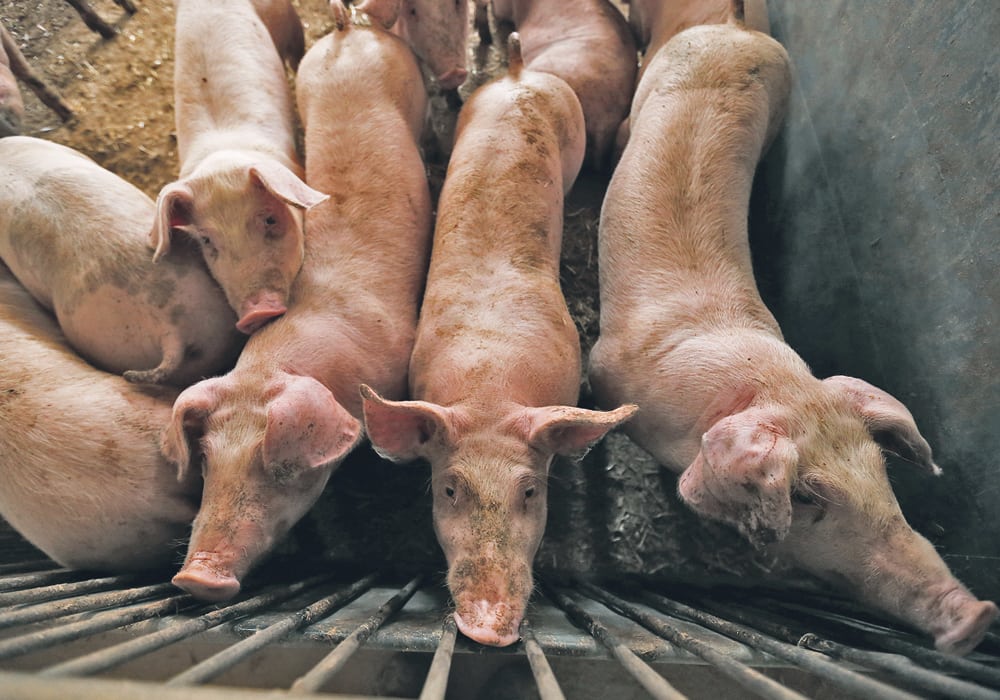Disease progressing through Asia and Europe can ‘shatter the swine sector’: pork council veterinarian
African swine fever is a major threat to pig production worldwide and it continues to spread in China and Europe, most recently into Belgium where 4,000 pigs are to be slaughtered in efforts to control it.
“It has the potential to shatter the swine sector,” said Dr. Egan Brockhoff, veterinary counsellor with the Canadian Pork Council, about the threat to Canada.
Oceans aren’t enough to keep the illness from invading North America, he said, because people are the most likely vector.
“The whole European story right now is hugely people-driven and part of that scenario is contaminated pork products,” Brockhoff said in a Sept. 21 interview.
Read Also

The Western Producer Livestock Report – November 13, 2025
Western Producer Livestock Report for November 13, 2025. See U.S. & Canadian hog prices, Canadian bison & lamb market data and sales insights.
During a Sept. 19 conference call organized by Alberta Pork, he emphasized the risk.
“It is one of the most severe clinical diseases of pigs on the planet,” he said. “This is a virus we absolutely do not want in Canada.”
ASF is a reportable disease and its presence in Canada would cause border closures, a halt to pig and pork trade and mass destruction of animals, he said. There is no treatment or vaccine.
African swine fever virus is not destroyed in meat via curing, smoking, salting or air-drying, which are all traditional approaches to preparation.
The virus can also survive rotting, freezing and low-temperature, short-duration cooking.
Brockhoff said people could unwittingly bring virus-infected meat to Canada and from there it could enter the swine food chain.
How? Of about 14,300 hog production premises in Canada, about 6,500 are small pig operations, said Brockhoff. Feeding scraps and swill to those pigs is a relatively common practice.
“I think very few Canadians are aware that they are not supposed to be garbage-feeding their pigs. They view it as recycling and an opportunity to use a product that would otherwise expire. That is thoughtful and conscientious but at the same time, people forget the potential risk that that poses to agriculture if there happens to be a contaminated pork product in the mix.”
Brockhoff said Global Meat News, which follows the meat industry, last week reported that Russia continues to put ASF-infected pigs into the food chain. Though the virus is not a threat to humans, pigs can spread it throughout the processing chain to other pigs and to other countries.
That might also increase the risk that wild pig populations in Europe and Asia will contract the virus and become a reservoir for disease that is nearly impossible to control.
Brockhoff said Canada imports pork from ASF-positive countries and although the Canadian Food Inspection Agency has processes to mitigate risk of virus spread, “there’s no such thing as no risk.”
Dr. Jette Christensen, manager of the Canada West Swine Health Intelligence Network, said Africa, Eastern Europe and China remain the three highest risk areas for ASF globally and for Canada there are several potential pathways for viral entry: imports of live animals, semen and embryos; food scraps and swill fed to pigs; travellers carrying it to Canada on their persons or belongings; and transmission to wildlife via hunters who bring it here from another country.
“One case of African Swine Fever in Canada or the U.S. will quickly spread across the border and in both countries,” said Christensen. “Prevention is all about biosecurity.”
She noted that the potential of imported feed and feed ingredients to spread the virus remains uncertain.
However, China has cornered the market on certain feed ingredients required for healthy pig production, including vitamins, trace minerals and certain amino acids.
Brockhoff said there’s a risk that ingredients from China, potentially carrying the virus, could be imported through brokers and bypass CFIA safeguards.
“We are really working really hard to fully understand the quality assurance process of getting products into Canada,” he said.
Melissa Dumont, executive director of the Animal Nutrition Association of Canada (ANAC), said on the conference call that feed is still considered a low risk of contamination compared to other potential vectors.
The ANAC membership includes about 90 percent of commercial feed producers, which produce about half the manufactured feed sold to producers.
“(ASF) is at the forefront of the work that we are doing at ANAC today,” said Dumont.
She echoed Brockhoff’s assessment that there are no alternatives to various feed ingredients supplied by China. Some 15 to 25 products, including lysine, Vitamin A, D3 and various vitamin Bs, come from that country, where ASF is spreading.
ANAC has developed a biosecurity guide, available on its website, and is regularly communicating with feed suppliers, Dumont said.
















